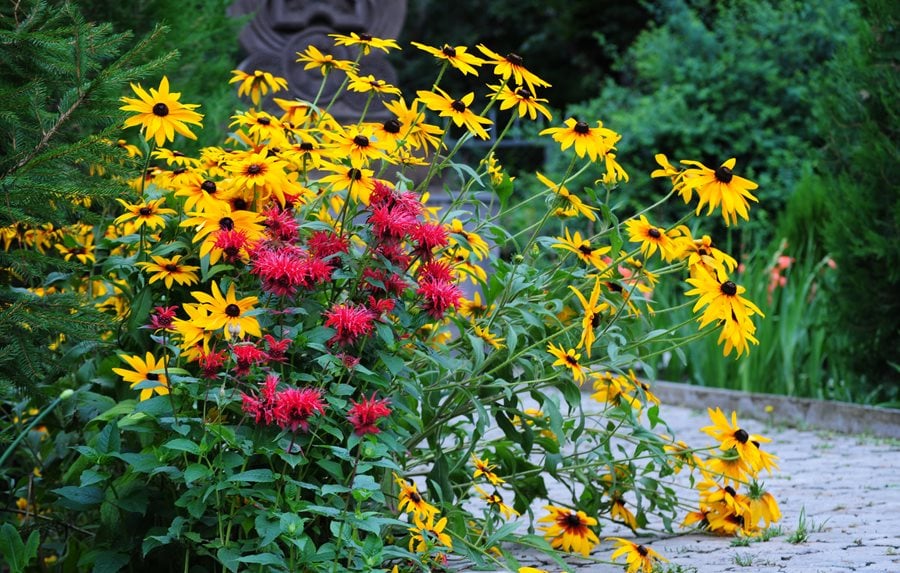
( Tip: If you coat your bean seeds with an inoculant before planting, you will fix nitrogen in the soil, and that will benefit all of the plants.) Once the corn is 6 inches to 1 foot tall, plant four bean seeds, evenly spaced, around each stalk.( Tip: Another option is to plant corn transplants in this case, you’d plant them at the same time as the beans.) You can grow several pole bean varieties without worrying about hybrids, but just plant one variety per hill. This ensures that the corn stalks will be strong enough to support the beans. The beans’ role is to fix nitrogen in the soil, which is needed for strong corn production. Don’t plant the beans and squash until the corn is about 6 inches to 1 foot tall.Sow six kernels of corn an inch deep in the flat part of the mound, about ten inches apart in a circle of about 2 feet in diameter. Don’t plant any later than June 1 in most areas, since corn requires a long growing season. Plant corn first, once the danger of frost has passed and nighttime temperatures reach 55☏ (13☌).

For multiple mounds, space about four feet apart. The center of the mound should be flat and about 10 inches in diameter. Make a mound of soil that is about a foot high at its center and 3 to 4 feet wide.In the spring, prepare the soil with plenty of organic matter and weed-free compost. Adjust the soil with fish scraps or wood ash if needed.Each hill will be about 4 feet wide and 4 feet apart, with 4 to 6 corn plants per hill. This method of planting isn’t based on rows, so think in terms of a small field.
#Garden layout companion planting full#
There are variations to the Three Sisters method, but the idea is to plant the sisters in clusters on low wide mounds rather than in a traditional single row.īefore planting, choose a sunny location (at least 6 hours of full sun every day). If you do wish to investigate pure strains of native seeds, reach out to experts such as Native Seeds/ SEARCH, a nonprofit headquartered in Tucson, Arizona, or Native American cultural museums. Note: Pumpkins are too vigorous and heavy plant in a separate bed. Native American squash was different, but a yellow summer crookneck is similar enough. Small-leafed squash such as summer squash (zucchini) or winter squash (Hubbard).Varieties include the pale yellow Tarahumara corn, Hopi White corn, or heritage Black Aztec Corn such as sweet corn, dent corn, popcorn, or a combination. Your favorite sweet corn variety will do, although Native American gardeners traditionally used a heartier corn with shorter stalks or many-stalked varieties so that the beans didn’t pull down the corn.If you’d like to try traditional varieties, look for Four Corners Gold Beans or Hopi Light Yellow. So if you want to be extra cautious, look for less vigorous climbers. We’ve also heard that some very vigorous hybrid pole beans clambering up skinny hybrid corn stalks can pull them down. Common pole beans such as Scarlet Runner or Italian Snap should work. In modern-day gardens, the Three Sisters consists of these three vegetables: Image credit: University of Illinois Extension Which Seeds to Plant Together, the three sisters provide both sustainable soil fertility as well as a heathy diet. Perfection! The prickly squash leaves also keep away raccoons and other pests, which don’t like to step on them.The large leaves of the sprawling squash protect the threesome by creating living mulch that shades the soil, keeping it cool and moist and preventing weeds.As the beans grow through the tangle of squash vines and wind their way up the cornstalks into the sunlight, they hold the sisters close together.The pole beans, the giving sister, pull nitrogen from the air and bring it to the soil for the benefit of all three.As older sisters often do, the corn offers the beans necessary support.

Together, the sisters provide a balanced diet from a single planting. In legend, the plants were a gift from the gods, always to be grown together, eaten together, and celebrated together.Įach of the sisters contributes something to the planting. The vegetable trio sustained the Native Americans both physically and spiritually. By the time European settlers arrived in America in the early 1600s, the Iroquois had been growing the “three sisters” for over three centuries.


 0 kommentar(er)
0 kommentar(er)
